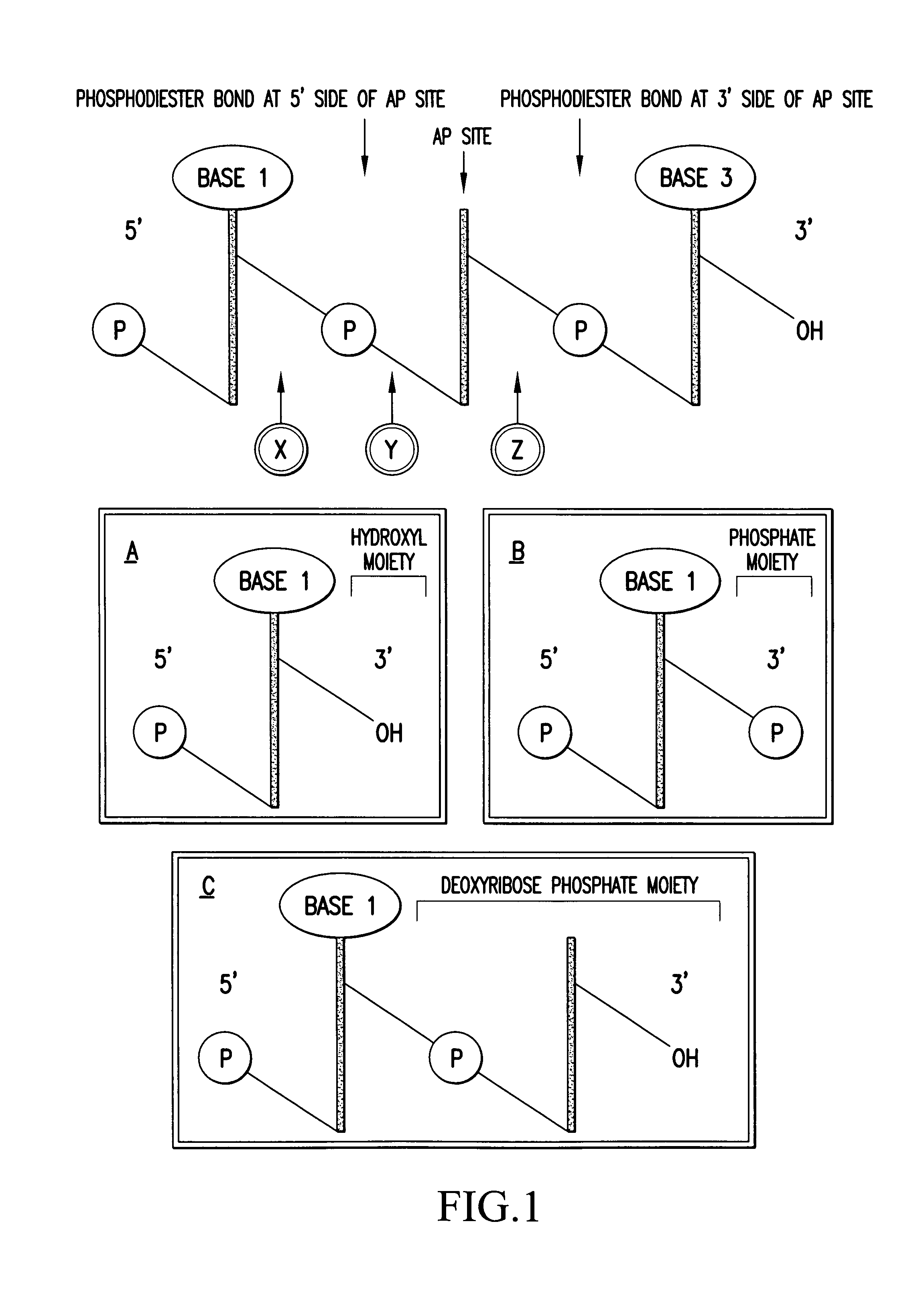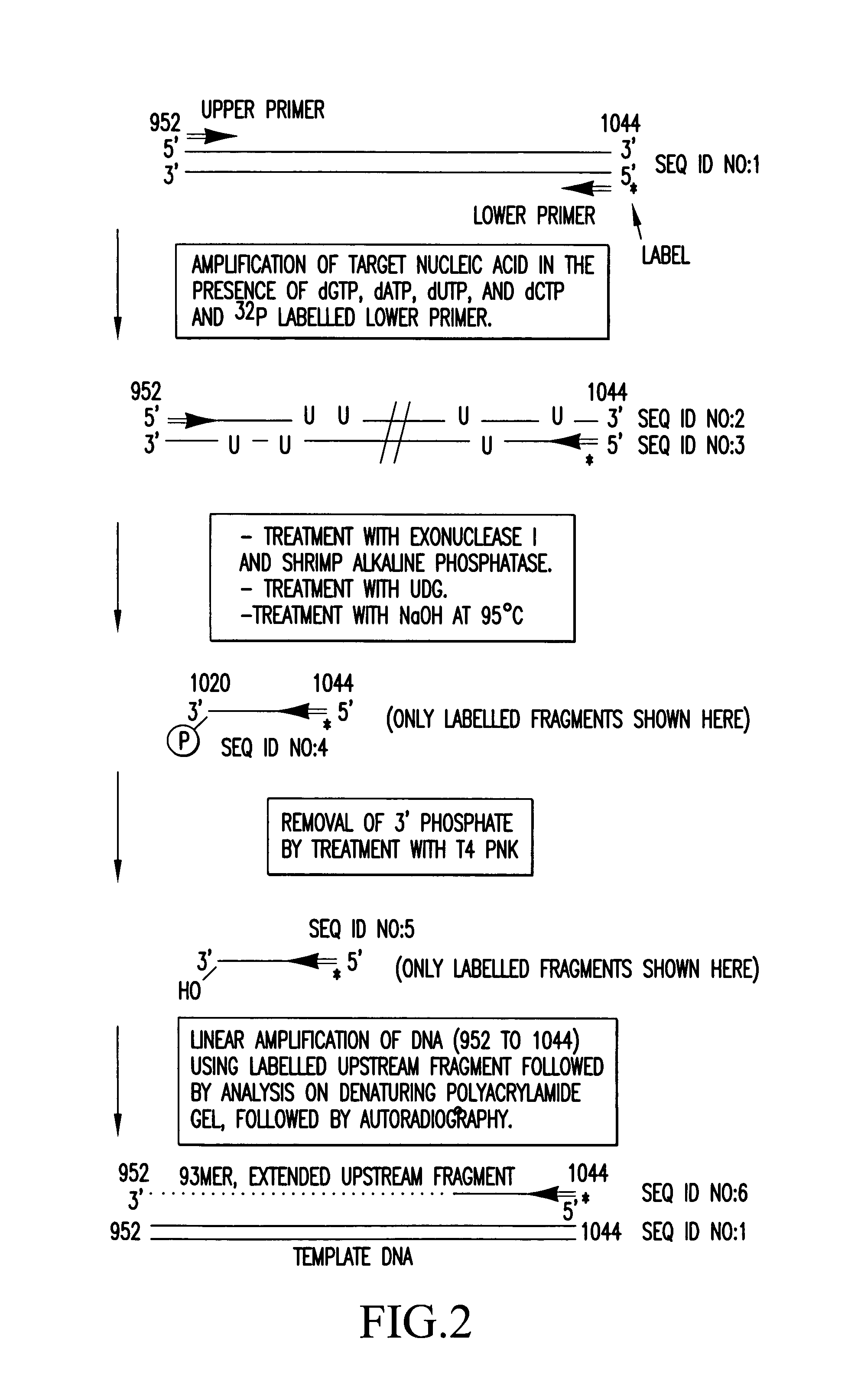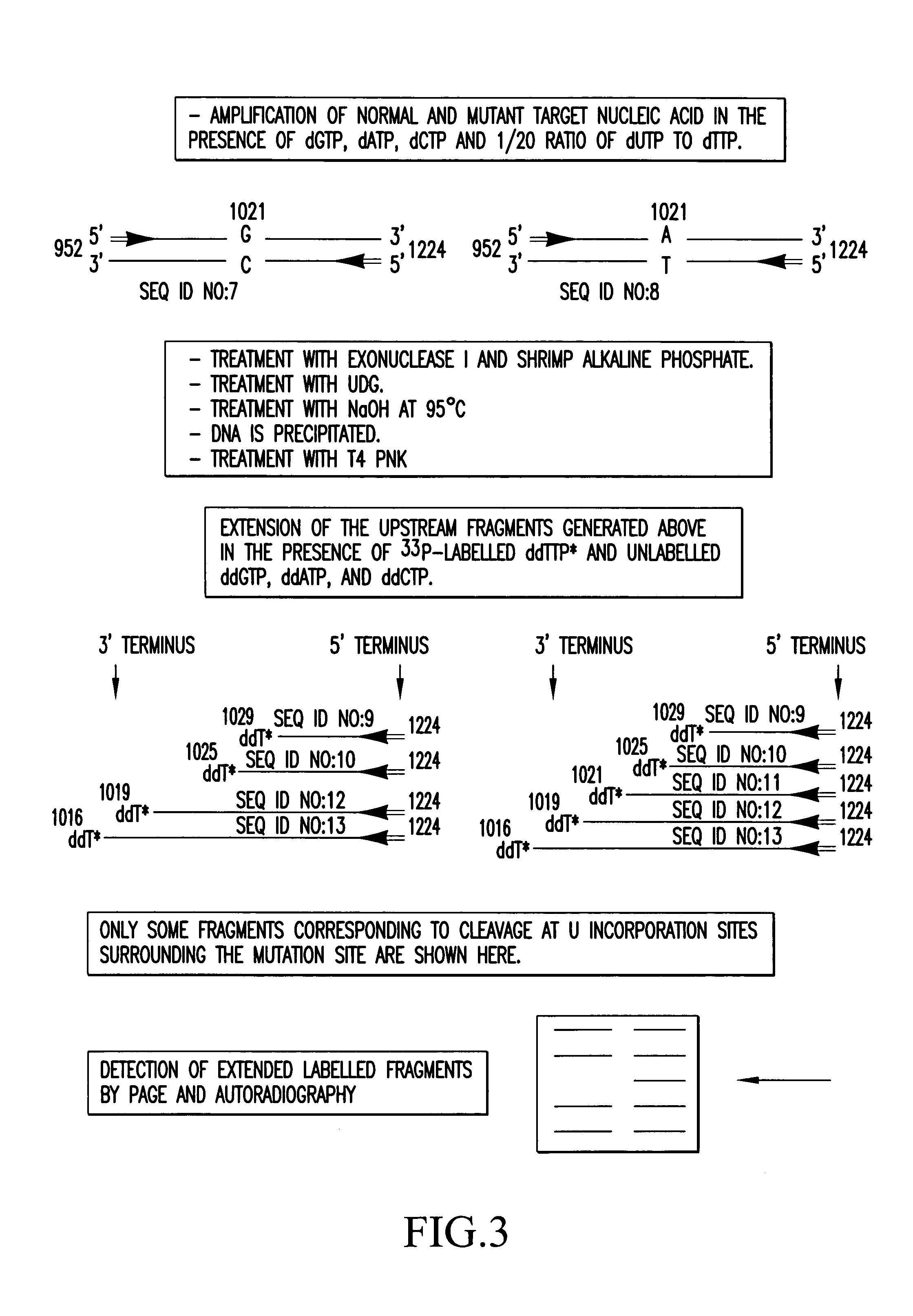Method for the characterization of nucleic acid molecules involving generation of extendible upstream DNA fragments resulting from the cleavage of nucleic acid at an abasic site
a nucleic acid and upstream dna technology, applied in the field of nucleic acid molecules characterisation, can solve the problems of inability to combine multiple samples for simultaneous analysis, and inability to detect sequences, etc., to achieve enhanced mutation detection, rapid screening, and enhanced mutation detection at cpg sequences
- Summary
- Abstract
- Description
- Claims
- Application Information
AI Technical Summary
Benefits of technology
Problems solved by technology
Method used
Image
Examples
example 1
[0112]The method according to the invention was used to demonstrate the production of an extended DNA fragment by extension from the 3′OH group of an upstream fragment, which had been generated by cleavage of uracil containing DNA at the site of incorporation of the modified nucleotide. Target nucleic acid was a region of the RYR1 gene (952 to 1044) amplified from human cDNA by using upper (952 to 972) and lower (1024 to 1044) primers to generate a double stranded DNA, 93 bp in length. (Nucleotide numbers refer to the sequence of the RYR1 gene)
[0113]FIG. 2 is a schematic diagram of the target nucleic acid and the upper and lower primers (primers contain standard bases, G, A, T and C). Six pmoles of the lower primer was end labelled by incubation with 1 unit of T4 Polynucleotide Kinase (commercially available from New England Biolabs), 70 mM Tris-HCl (pH7.6), 10 mM MgCl2, 5 mM dithiothreitol and 1 μCi γ32P ATP (3000 Ci / mmol) for 30 min at 37° C. The target nucleic acid sample was amp...
example 2
[0118]The method according to the invention was used to detect the presence of a G to A mutation at position 1021 in the human RYR1 gene. cDNA from a normal individual and from an individual affected with Malignant Hyperthermia was amplified by using upper (952 to 972) and lower (1204 to 1224) primers to generate a 273 bp double stranded DNA fragment (952 to 1224)(As in the case of Example 1 nucleotide numbers refer to the sequence of the RYR1 gene).
[0119]FIGS. 3 and 4 are schematic diagrams of the target nucleic acid and the upper and lower primers (primers contain standard bases, G, A, T and C). The target nucleic acid sample was amplified by PCR in a reaction mix containing target nucleic acid, 0.2 mM dATP, dCTP, dGTP and 0.19 mM dTTP and 0.01 mM dUTP, and 6 pmoles of upper and lower primers in a total volume of 19 μl. The reaction mix was then overlaid with an equal volume of mineral oil and a hot start PCR was performed whereby the reaction mix was heated to 94° C. for 5 min pr...
example 3
[0124]The method according to the invention was used to detect the presence of a G to A mutation at position 6411 (codon 12) in the human Ki-ras gene. Genomic DNA from normal tissue and tumour tissue of an individual with colon cancer was amplified by using upper (6390 to 6409) and lower (6417 to 6443) primers to generate a 54 bp double stranded DNA fragment (6390 to 6443)(Nucleotide numbers refer to the genomic sequence of the Ki-ras gene including introns).
[0125]FIG. 5 is a schematic diagram of the target nucleic acid and the upper and lower primers (primers contain standard bases, G, A, T and C). The target nucleic acid sample was amplified by PCR in a reaction mix containing target nucleic acid, 0.2 mM dATP, dCTP, dGTP and dUTP and 6 pmoles of upper and lower primers in a total volume of 19 μl. The reaction mix was then overlaid with an equal volume of mineral oil and a hot start PCR was performed whereby the reaction mix was heated to 94° C. for 5 min prior to addition of 1 uni...
PUM
 Login to View More
Login to View More Abstract
Description
Claims
Application Information
 Login to View More
Login to View More - R&D
- Intellectual Property
- Life Sciences
- Materials
- Tech Scout
- Unparalleled Data Quality
- Higher Quality Content
- 60% Fewer Hallucinations
Browse by: Latest US Patents, China's latest patents, Technical Efficacy Thesaurus, Application Domain, Technology Topic, Popular Technical Reports.
© 2025 PatSnap. All rights reserved.Legal|Privacy policy|Modern Slavery Act Transparency Statement|Sitemap|About US| Contact US: help@patsnap.com



